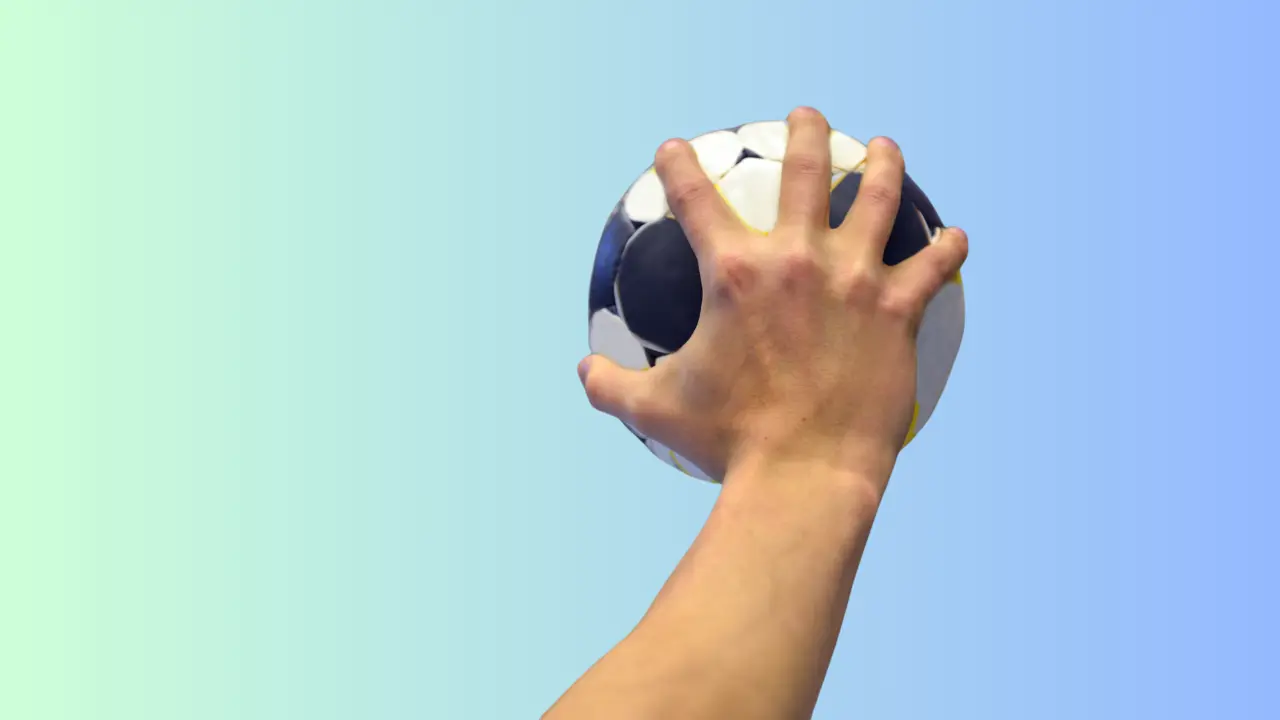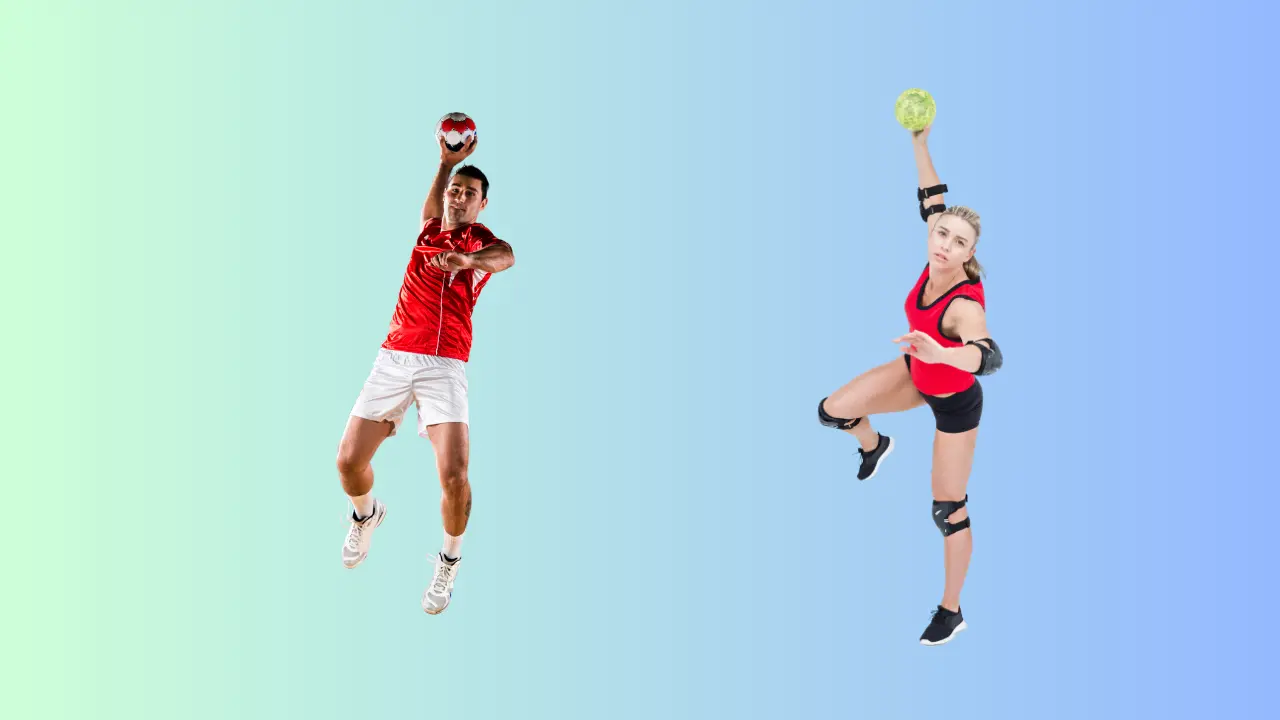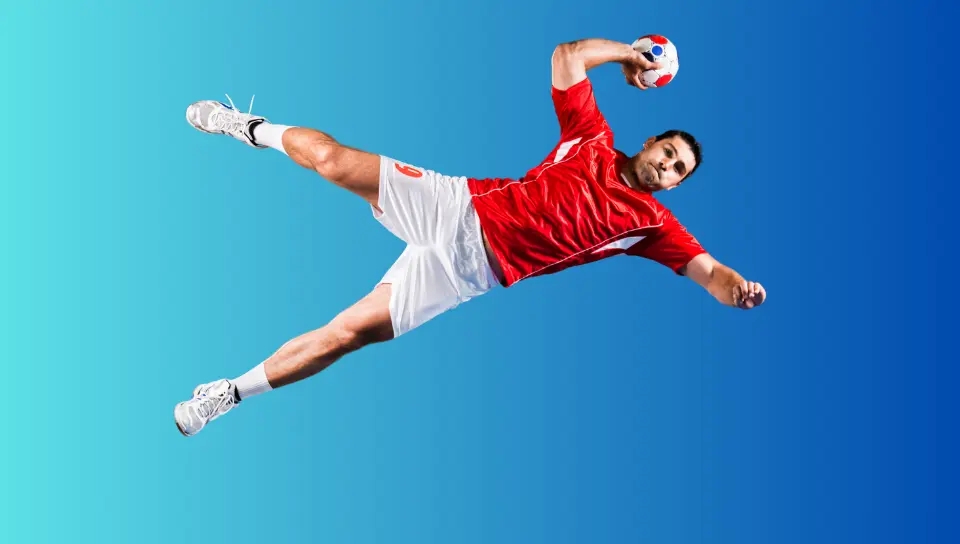Introduction: Handball Fundamentals
In this post, DEF will clarify all about the Handball Fundamentals: the execution of Handball technical fundamentals, characteristics and types of grab, pass, dribble, throw and fake in Handball.
What Is and Which Are the Handball Fundamentals?
The Technical Fundamentals of Handball are the techniques and movements used to play Handball. The main Technical Fundamentals of Handball are: the Grab, the Reception, the Pass, the Throw, the Dribble and the Fake.
Handball Grab
The Grab is one of the most basic fundamentals of handball, it is the act of holding the handball with one hand. The correct Handball grab is made by holding the ball in the palm of the hand and squeezing (pressing) with the fingertips.
Tip: The pressure exerted by the thumb and little finger is very important for a good grip.

Handball Reception
Reception is one of the simplest fundamentals of Handball, it is the act of receiving the ball. Handball Reception should always be done with both hands parallel and slightly concave and facing forward.
Note: Handball Reception can also be done with one hand.
Handball Pass
The Pass is one of the main technical fundamentals of Handball, the Pass is the act of throwing the ball between the players of the same team.
What Are The Handball Passes Types?
- Over-shoulder pass: the most used pass in a handball, can be done in straight or parabolic trajectory.
- Pronation pass: the Handball Pronation Pass is made by holding the ball with the palm pointing down and performing a spin of the fist outward. It can be done with side or back direction.
- Behind-the-head pass: The handball behind-the-head pass is executed exactly as the name says, throwing the ball “behind the head”, can be done sideways or diagonally.
- Behind the body pass: The pass behind the body is made by throwing the ball behind the body, can be done in lateral or diagonal direction.
- Backward pass: This is the head-level pass with fist extension throwing the ball backwards.
- Bounced pass: This is when the ball touches the ground once before being received by the teammate. This type of pass is used to deflect the ball from an opponent.
Handball Throw
Throwing is also one of the main Technical Fundamentals of Handball, it is through throwing that the goals are scored in a handball game. Throwing is the act of throwing the ball towards the goal of the opposing team.
What Are The Handball Throw Types?
- Standing throw: this is the type of throwing in Handball where one or both feet are in contact with the ground at the time of throwing.
- Suspended throw: In this type of throw, the player makes a jump and is completely suspended in the air at the time of throwing.
- Falling throw: this is the type of Handball Throw where the player projects a fall after the throw. By forcing a fall, the player projects his body and can put more power into the shot. It is a type of throw widely used among the pivots in Handball.
- Rolling throw: this is the type of Throw where after the player has thrown the ball, he makes a roll, usually a shoulder roll. It is a type of throwing commonly used by the wingers in Handball.

Handball Dribbling
Dribbling is a basic fundamental of Handball, it is the act of bouncing the ball with one hand without losing control of the ball. Dribbling can be done with the player standing or moving. The main function of dribbling in handball is the progression with possession of the ball.
What Are The Handball Dribbling Types?
The High Dribble: It is widely used for speedy progressions of the Handball player. The high dribble is widely used in counter attacks.
The Low Dribble: The Low Dribble is basically used to protect the ball against an opposing player.
The goals of Dribbling in Handball are:
- Fake the defense;
- Escape from the opponent defensive system;
- Reach a more favorable throwing position.
Handball Fake
Handball fake is performed when a player in possession of the ball threatens to make a move in one direction to mislead and unbalance the opponent’s defense and make the move in another direction.
Technical Features of Handball Fake
- Offset (move from one point to another on the court);
- Change of direction (move in different directions);
- Rhythm Shift (from slow to fast and fast to slow).
What Are the Handball Fake Goals?
- Pass an opponent;
- Unbalance a direct opponent;
- Distract the opponent’s attention;
- Gain numerical superiority.
Are Features of a Good Fake:
- Have a good speed reaction;
- Have a good movement speed;
- Have a good balance;
- Be agile in changes of direction.
What Are The Handball Fake Types?
- Throwing fake;
- Pass fake;
- Right-shift fake;
- Left-shift fake.
